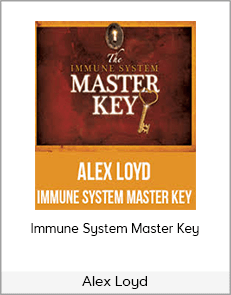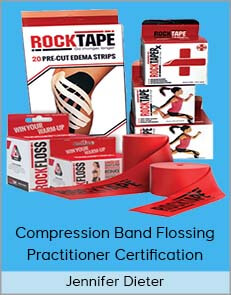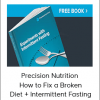Precision Nutrition – How to Fix a Broken Diet + Intermittent Fasting
$25.00
O types (endomorphs) have a larger bone structure with higher amounts of tot
Precision Nutrition – How to Fix a Broken Diet + Intermittent Fasting
Check it out: Precision Nutrition – How to Fix a Broken Diet + Intermittent Fasting
In this article I’ll share the 3 main strategies I use to help clients fix a “broken diet” and start eating better.
I’ll also share how we troubleshoot eating plans when they’ve “just stopped working” and you don’t know what else to try.
And, finally, I’ll show you how to use these powerful and purposeful strategies to improve your own eating. Or to help others do the same.
Note: I’ve also prepared a comprehensive video seminar covering this topic. It was recorded live in London, England.
Bonus: We even created a cool infographic that summarizes this article.
++
Nutrition “advice” often comes in buzzwords and slogans. We’ve all heard at least one of these gems:
- “Just eat whole foods.”
- “Only eat food that your grandmother would recognize.”
- “Eat more fat and fewer carbs.”
- “If it doesn’t run, fly or swim – or it isn’t a green vegetable – don’t eat it.”
It’s easy to simplify healthy eating into a five-second pitch. But soundbytes aren’t enough to actually help people fix their eating and get better results.
You see, when you’re an actual nutrition coach who works with real humans in the real world, slogans don’t get the job done.
Real people need patient, careful, empathetic coaching. This means:
- Listening to their needs and what they want to accomplish.
- Learning how they live.
- Discovering what’s really important to them.
- And then working together to create the right nutritional approach for them, a diet that’s personal and unique, based on their goals and lifestyle.
Another thing that good nutrition coaches do to help their clients?
- Observing their progress carefully and correcting course as necessary.
Here’s why: Every diet system is going to stop working at some point. No matter how great it seems initially, that diet will break.
And when it does, your next step is crucial.
So, in this article, I’ll help you figure out how to get started when your diet feels broken. I’ll also share exactly how we troubleshoot nutrition plans when “they’ve just stopped working”.
And then I’ll teach you how to do it all yourself.
First, though, a disclaimer. I’m not going to give you a set of rules to follow. Or even share a specific diet philosophy.
Instead, I’m going to share a framework for evaluation.
This way, if you follow a Paleo diet, you can learn to Paleo better. If you’re a vegan, you can learn to do that better too. And, if you’re just getting started with eating healthier, you can start out right, without wasting time and energy.
Step 1: Identify and remove nutritional deficiencies
Most people think they need a complete overhaul at first.
“I have to cut out sugar… and dairy… and carbs… and saturated fat.
Plus I have to eat more protein… more healthy fats… and more vegetables.
Not a lot of fruit, though.
I have to start drinking lots of water too.
And exercise… maybe a 6 am boot camp… yeah.”
I don’t know about you, but I get exhausted just thinking about changing all this, all at once. Let’s call it the “Mission Impossible” approach.
After coaching over 100,000 clients in the last few years, I’ve come to realize that the Mission Impossible approach isn’t just difficult; it’s misguided.
Because a complete overhaul rarely addresses what’s making most people feel bad in the first place.
Often, people struggle with how they look and feel because their physiology doesn’t work the way it should.
This can be hormonal imbalances, but it’s more often dietary deficiency: not getting the right nutrients, in the right amounts, to get the best results.
Dietary deficiencies, therefore, are the first red flag that something’s wrong. (And these dietary deficiencies can even contribute to hormonal imbalances.)

Just how common are dietary deficiencies?
The research in this area is pretty telling. A study published in the Journal of the International Society of Sports Nutrition showed that it’s really hard to get all the essential vitamins and minerals from food alone.
This study analyzed 70 athlete diets. Every single diet was deficient in at least three nutrients. Some diets were missing up to fifteen nutrients! The most common deficiencies?
- iodine
- vitamin D
- zinc
- vitamin E
- calcium
Another study, also published in the Journal of the International Society of Sports Nutrition, showed that people following one of four popular diet plans (including Atkins, South Beach, and the DASH diet) were also very likely to be micronutrient deficient, particularly in six key micronutrients:
- vitamin B7
- vitamin D
- vitamin E
- chromium
- iodine
- molybdenum
Back when I was a graduate student at the University of Western Ontario, I set out to find the mythical “balanced diet.” I analyzed the intake of nearly 600 fourth-year exercise and nutrition undergraduate students.
Shockingly, less than 10% met the minimum standards for a “complete, balanced diet”. Like the other studies, these folks were missing such nutrients as:
- zinc
- magnesium
- vitamin D
- omega 3 fatty acids
- protein
Bottom line: Dietary deficiencies are very common. Chances are, you’ve got one, no matter how good you think your diet is.
That’s a problem because when you’re deficient in key nutrients, your physiology doesn’t work properly. And when your body doesn’t work as it should, you feel rotten.
Just how important is this first step?
Energy levels, appetite, strength, endurance, and mood all rely on getting enough of these essential nutrients. When you don’t get them, things break down.
That’s why you can eat “clean”, go Paleo, avoid meat, lower your carbs, or count calories – you can do “everything right” nutritionally – and still feel lousy.
You need to identify your red flags from the very beginning and start eliminating them, one by one.
What are the common nutritional red flags?
Here are the most common deficiencies we see with new clients:
- water (low-level dehydration);
- vitamins and minerals (especially from vegetables and fruits);
- protein (particularly in women and in men with low appetites);
- fiber (95% of the population is deficient here); and
- essential fatty acids (especially omega-3’s).
To find out where you stand, you could get your diet analyzed by a dietitian (this typically costs between $100 and $150).
You could also record what you eat each day and enter it into an online diet calculator like the ones at Fitday or Livestrong.com.
At Precision Nutrition, we like to make it even easier. As soon as clients begin with us, we do a quick survey of what they’re eating. From there, we help them:
- eat more of the protein-rich foods they prefer;
- eat more veggies and fruits rich in the vitamins and minerals they need most;
- eat more fiber-rich quality carbs;
- take in more essential and other healthy fats; and
- drink more hydrating fluids.
Without any other advanced screening or dietary changes, our clients quickly start feeling better. They lose fat and gain lean muscle. They feel more motivated. And their workouts become easier and better.
The power of removing nutrient deficiencies
Here’s just one example (of many): Research in the British Journal of Psychiatryshows that providing fish oil and a multivitamin to prison inmates reduces aggressive and violent behavior by 35% and decreases antisocial behavior by 26%.
Also, a paper published in Nutrition Reviews shows that giving children fish oil and a multivitamin improves both their behavior and intelligence scores. (Who doesn’t want a smarter, better-behaved kid?)
That’s the power of removing nutrient deficiencies. When our bodies don’t have the nutrients they need to do their work, we all suffer. But as soon as we get these nutrients, we thrive.
Step 2: Adjust food amount and food type
Once we’re getting all the raw materials necessary for proper functioning (essential nutrients) we can move on to bigger issues. These include:
- food amount (what some call calorie intake); and
- food composition (which includes macronutrient breakdown).
Food amount and calorie counting
In our coaching programs we help clients get away from using handbooks, websites, databases, spreadsheets, and math when planning meals.
You see, while we know that total food (calorie) intake matters, we’re just not fans of counting calories.
To begin with, calorie counting does nothing to help us tune into our own powerful hunger and appetite cues. By learning how to listen to our own bodies, we have better long-term success in healthy eating.
(Of course, not everyone knows how to do this from the start. It takes a little coaching and some practice.)
Nor does calorie counting help us balance our health goals with our natural human enjoyment of food. In the short term, anyone can turn eating into a numerical and robotic exercise. But, in the long run, this strategy falls apart.
(Just ask anyone who “used to” count calories. You shouldn’t have a hard time finding them.)
There’s another problem with calorie counting: It’s just not all that accurate.
Because of incorrect labeling, laboratory errors, and differences in food quality and preparation, calorie counts recorded on food labels and websites – even those within the USDA’s nutrient databases – can be off by as much as 25%.
Bottom line: even if you’re the world’s best calorie counter (and you don’t mind the soul-sucking boredom that comes along with it) the math just doesn’t add up.

Calorie control without counting
We teach our clients a different approach to calorie control, using their own hand as the ultimate, portable measurement tool.
For example, a client might begin by eating:
- 1-2 palms of protein dense foods at each meal;
- 1-2 fists of vegetables at each meal;
- 1-2 cupped handfuls of carb dense foods at most meals; and
- 1-2 thumbs of fat dense foods at most meals.
First, we help clients see what this looks like. Like, in real life. On a plate.
Then, we help clients adjust their actual number of portions up or down, especially carbs and fats, depending on each person’s unique body and goals. For example:
- Men who want to add mass fast would throw in up their intake to 3 thumbs of fat and/or 3 cupped handful of carbs at each meal.
- But men in who want to lose fat might keep their intake down to 1 thumb of fat and 1 cupped handful of carbs at each meal, eaten slowly and mindfully to “80% full”.
Of course, just like any other form of nutrition planning–including detailed calorie counting–this meal template is just a starting point.
You can’t know exactly how your body will respond in advance. So stay flexible and “steer dynamically”. Adjust your portions based on your hunger, fullness, overall activity level, and progress towards your goals.
Start with the basic template and then adjust your portions at any time using outcome-based decision-making, aka: “How’s that working for you?”
For more on this idea, including photo examples, check out our calorie control guide for men and women
Food and macronutrient composition
Most people can simply eliminate nutrient deficiencies and get food portions and quality right, and stop there.
Small adjustments in those two areas – and nothing more – will make a huge difference in how 90% of folks look and feel. Simple. Easy.
However, for those who want to go further – because they have more advanced goals or because they’re already doing the first two and still struggling – let’s talk about food composition.
If you’re anything more than a casual observer of human beings, you might have noticed that — much like breeds of dogs — they come in different shapes and sizes. You’ll see everything from the giant wolfhound to the Chihuahua; everything from the slim and wiry whippet to the muscular bulldog to the rotund little Corgi.
Dog breeds also vary in their body composition, energy levels and metabolic rates… just like humans. Some people seem to be always fidgeting, always in motion; other people tend naturally to be more sedentary.
Different body type groups — aka “somatotypes” — typically include a few general characteristics:
- morphology and skeletal structure
- hormonal environment
- metabolism (including metabolic rate and how nutrients are processed)
If you specialize in a particular sport, especially at an elite level, you’ll often see that certain body types gravitate towards certain activities, or specific positions within sports.
At Precision Nutrition, we have a really simple shortcut for helping people “eat right for their body type”.
We begin by classifying clients into one of three general categories (or somatotypes):
- I types (ectomorphs),
- V types (mesomorphs), and
- O types (endomorphs).
Here’s a male example of each body type:

Here’s a female example of each body type:

Importantly, these are just general conceptual categories — principles that can potentially help us target our nutritional strategies. And this individualized approach is almost always used after first eliminating deficiencies and adjusting food amount.
Body types are not “carved in stone”. They are not the basis for “nutritional rules”, nor are they any specific system. (In other words, not all ectomorphs will be exactly the same, and being an ectomorph doesn’t necessarily causeanything to happen.)
Body types are simply a starting point.
Body types are a proxy for thinking about possible differences in metabolism, activity types, and nutritional needs. As a coach, you can create some working hypotheses using body types, which you can then test.
Nutrition for “I types”
Elite endurance athletes, climbers, and dancers are typically light and lean; sparsely muscled and light-framed, with delicate bones.
They may be tall and long-limbed (which is helpful in sports that need both height/reach and low body weight), or they may be smaller (which is helpful in sports where low absolute body weight is important, such as cheerleading or horse racing).
I types (ectomorphs) tend to prefer endurance activities, and/or sports where a good strength-to-mass ratio is important.
- Their engine speed is set to “high revving”. They tend to be thyroid- and sympathetic nervous system-dominant with either a higher output or higher sensitivity to catecholamines like epinephrine and norepinephrine. They typically have a fast metabolic rate.
- They’re high-energy. They’re often fidgeters and pacers. They tend to burn off excess calories with near-constant movement throughout the day.
- They tolerate carbs well and usually have higher carb needs. These are the rare folks who can seem to eat cookies with impunity.
I types therefore generally do best with more carbohydrates in the diet, along with a moderate protein and lower fat intake. So that’s what we recommend: more healthy carbs and less fat with a moderate amount of protein.
A nutrient distribution for this body type might be around 55% carbs, 25% protein, and 20% fat. (But don’t drive yourself crazy with the math. Just think “higher carbs and lower fat.”)
Here’s what that might look like using our portion control guide.
I type men begin by eating:
- 2 palms of protein dense foods at each meal;
- 2 fists of vegetables at each meal;
- 3 cupped handfuls of carb dense foods at each meal;
- 1 thumb of fat dense foods at each meal.

I type women begin by eating:
- 1 palm of protein dense foods at each meal;
- 1 fist of vegetables at each meal;
- 2 cupped handfuls of carb dense foods at each meal;
- 0.5 thumb of fat dense foods at each meal.

Nutrition for “V types”
Football running backs and safeties, soccer players, hockey players, wrestlers/MMA fighters, rugby backs and flankers, and other sports that combine all-around athleticism with speed, strength and power are typically mesomorphs: solid, strong-framed bodies that easily put on muscle.
If they’re taller, you might find them in sports like rowing, rugby, hockey, or basketball. If they’re shorter, you might find them in weightlifting or gymnastics.
V types (mesomorphs) have a medium sized bone structure and athletic body, and if they’re active, they usually have a considerable amount of lean mass.
- Their bodies are designed to be powerful machines. Excess calories often go to lean mass and dense bones.
- They tend to be testosterone and growth hormone dominant.
- Thus, they can usually gain muscle and stay lean easily.
V types therefore generally do best on a mixed diet, with balanced carbohydrates, proteins, and fats. And they often gravitate to activities that require this kind of metabolic flexibility. So that’s what we recommend.
A nutrient distribution for this body type might be around 40% carbohydrate, 30% protein, and 30% fat. (Again, don’t drive yourself crazy with the math. Just envision a roughly balanced mix of all three macronutrients.)
Here’s what that might look like using our portion control guide.
V type men begin by eating:
- 2 palms of protein dense foods at each meal;
- 2 fists of vegetables at each meal;
- 2 cupped handfuls of carb dense foods at each meal;
- 2 thumb of fat dense foods at each meal.

V type women begin by eating:
- 1 palm of protein dense foods at each meal;
- 1 fist of vegetables at each meal;
- 1 cupped handfuls of carb dense foods at each meal;
- 1 thumb of fat dense foods at each meal.

Nutrition for “O types”
O types (endomorphs) have a larger bone structure with higher amounts of tot




















